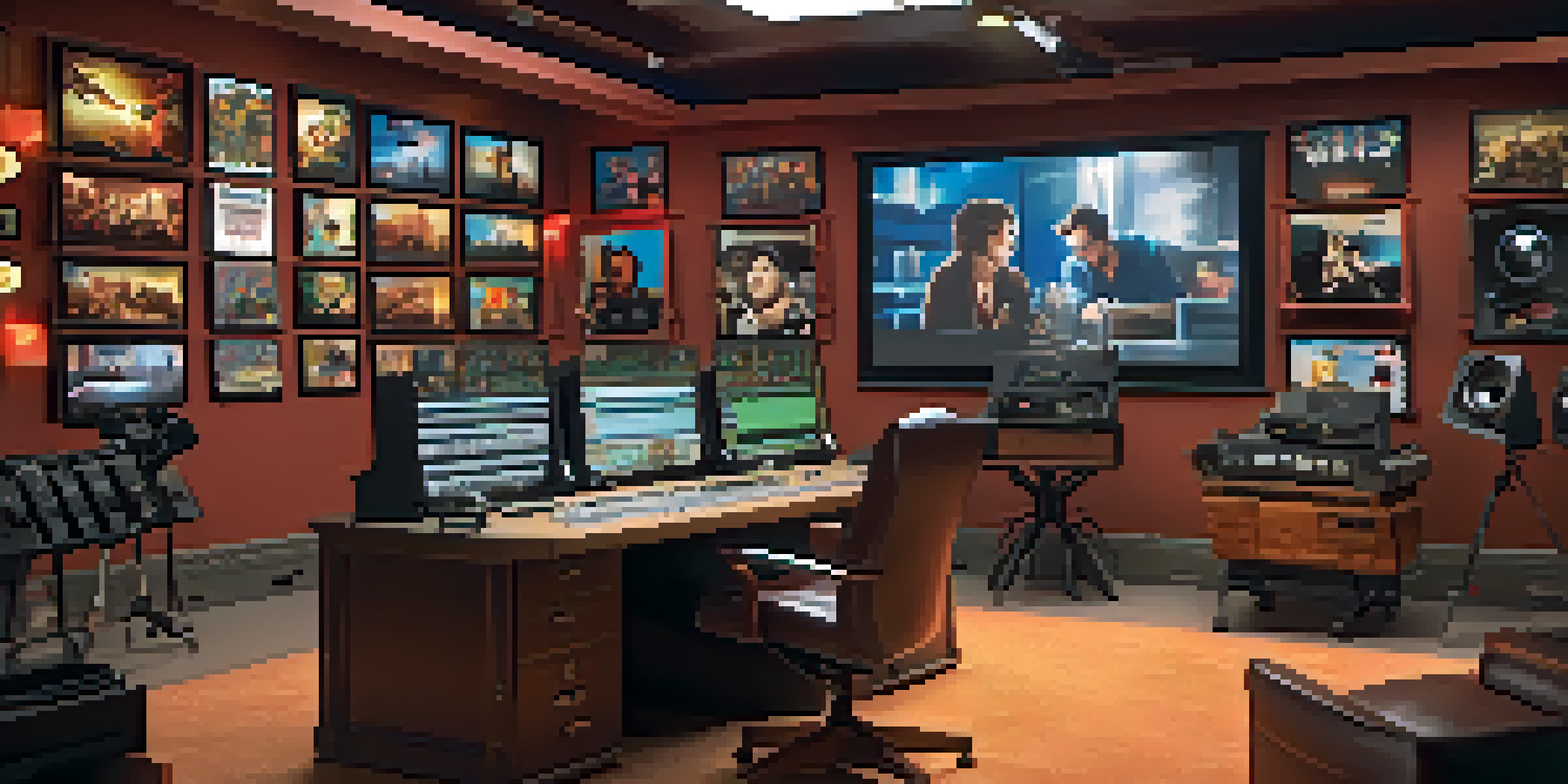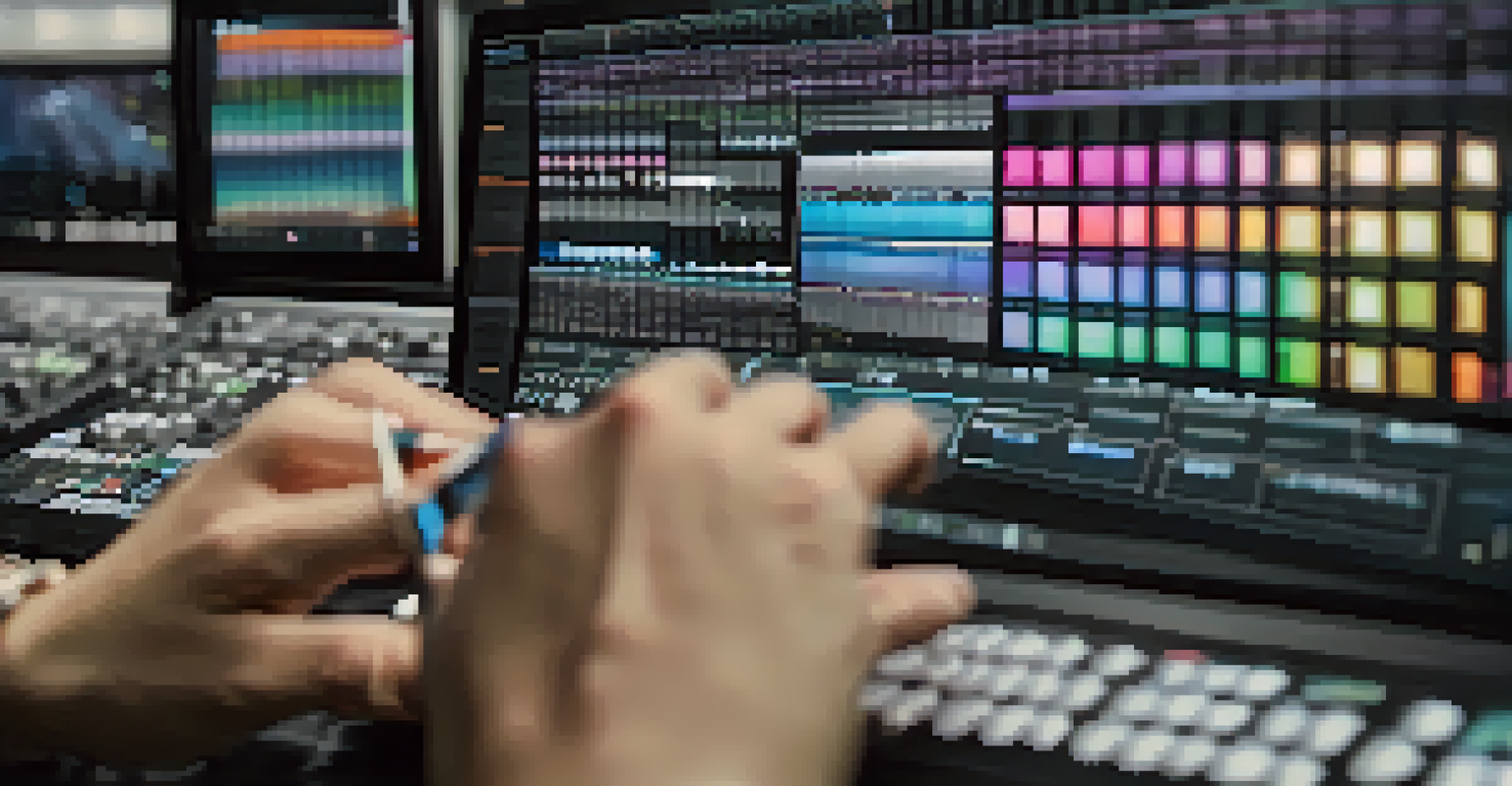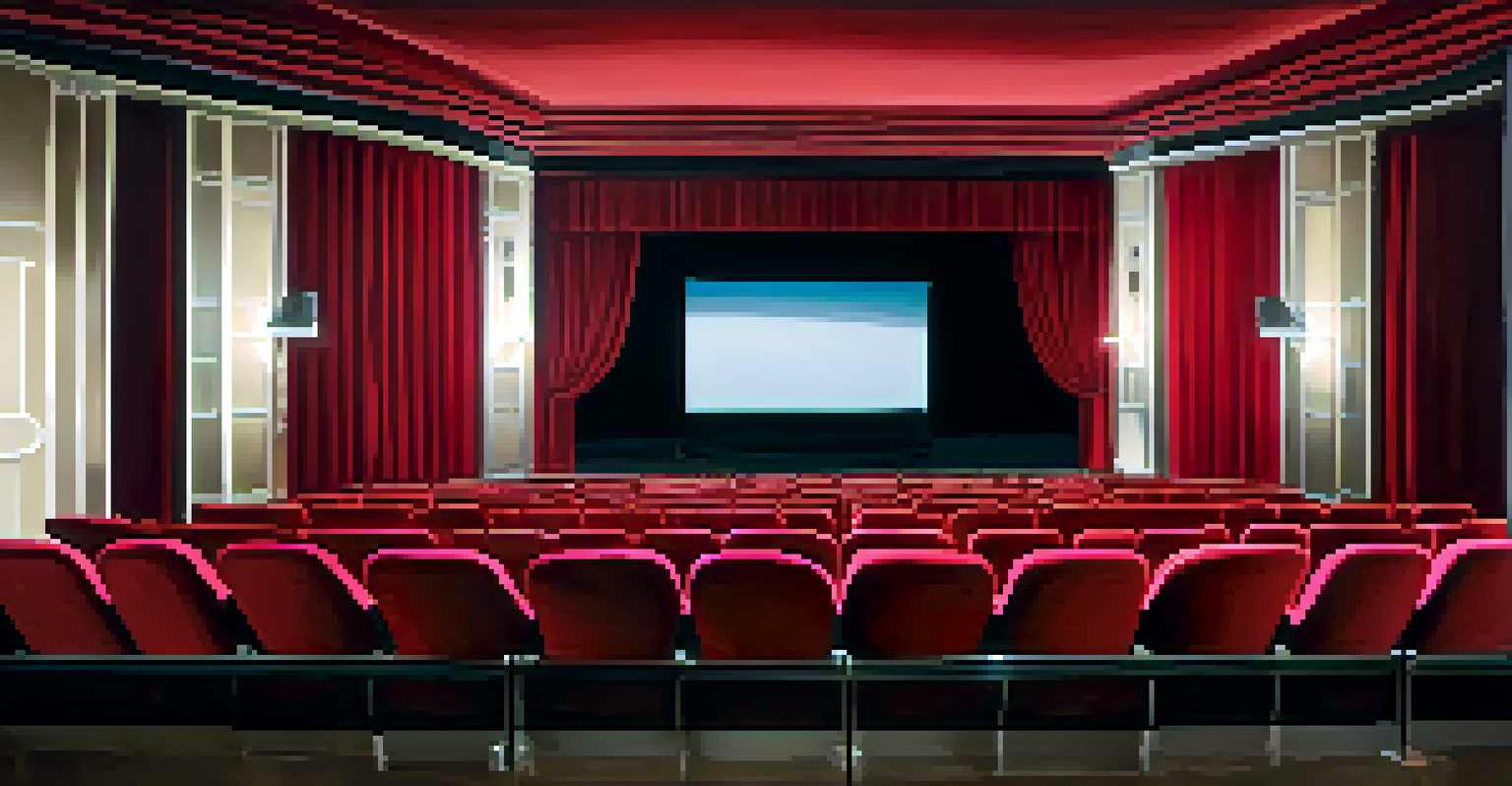Editing for Emotion: Crafting Impactful Scenes in Film

Understanding the Role of Editing in Film Emotion
Editing is often considered the unsung hero of filmmaking, subtly shaping how audiences experience a story. When done effectively, it can evoke powerful emotions and create lasting impressions. By selecting which shots to use and how long to hold them, editors influence the emotional rhythm of a scene, guiding the viewer's feelings.
Editing is the backbone of any film, a vital part of storytelling that often goes unnoticed.
For example, a quick succession of cuts can generate excitement or tension, while longer, lingering shots might evoke sadness or contemplation. This deliberate pacing plays a crucial role in audience engagement, as it allows for emotional build-up or release. Ultimately, editing not only tells the story but also amplifies the emotional stakes involved.
Understanding this fundamental aspect of editing can empower filmmakers to craft more resonant narratives. By recognizing how different editing techniques affect emotions, creators can make informed choices that enhance their storytelling. It's all about striking the right balance to ensure that the audience feels what the characters are experiencing.
Techniques for Evoking Emotions through Editing
Various editing techniques serve to evoke specific emotions, each with its unique impact on the viewer. For instance, cross-cutting between two scenes can heighten suspense or tension, as the audience anticipates the outcome of both situations. This technique keeps viewers on the edge of their seats, emotionally invested in the unfolding drama.

In contrast, the use of fade-ins and fade-outs can create a sense of nostalgia or reflection, giving the audience time to absorb what has just happened. These transitions can signal changes in time or mood, effectively shaping the emotional landscape of the film. Such techniques allow editors to manipulate the viewer's emotional journey.
Editing Shapes Emotional Experience
Effective editing subtly influences how audiences feel about a story by controlling the pacing and rhythm of scenes.
Moreover, the rhythm of cuts—fast or slow—can mirror a character’s emotional state. A frantic, rapid pace might reflect chaos or fear, while slow cuts can signify intimacy or sorrow. By employing these techniques thoughtfully, editors can build an emotional connection between the audience and the narrative.
The Importance of Sound and Music in Emotional Editing
Sound and music play a pivotal role in enhancing the emotional weight of edited scenes. A well-chosen score can elevate a moment from ordinary to extraordinary, amplifying the feelings conveyed through visuals. Think about how a haunting melody can make a sad scene resonate deeper, pulling at the heartstrings of the audience.
The power of film is in the editing. It is the editor who crafts the emotional experience of the audience.
Moreover, sound design—like the subtle rustle of leaves or the distant sound of thunder—can enhance the atmosphere and mood, making the viewer feel more immersed. The synchronization of sound with editing techniques can create moments that linger in memory long after the credits roll. This synergy between audio and visual elements is essential for impactful storytelling.
Great editors know how to harmonize sound and music with visual cuts to create a cohesive emotional experience. By weaving these elements together, they can guide the audience's emotional responses, making scenes feel more poignant and relatable. This holistic approach to editing can transform the viewer's experience, making it truly unforgettable.
Building Character Connections through Editing Choices
Editing can significantly shape how viewers connect with characters, influencing their emotional journeys. By choosing which moments to highlight, editors can emphasize a character's vulnerability or strength, crafting a more relatable persona. For instance, a close-up shot of a character's tearful expression can draw empathy from the audience, fostering a deeper connection.
Additionally, the timing of cuts can reveal deeper insights into a character's motivations. For example, a sudden cut to a character's reaction can convey shock or realization, enhancing the emotional intensity of the moment. These choices allow viewers to understand and feel alongside the characters, enriching the overall narrative.
Sound Amplifies Emotional Impact
The combination of sound and music with visual editing enhances the emotional weight of scenes, making them more memorable.
Ultimately, the emotional bond between the audience and characters can hinge on effective editing. By thoughtfully selecting moments that resonate, editors can ensure that viewers remain invested in the characters' journeys. This connection is what keeps audiences returning to stories time and again.
Utilizing Flashbacks and Non-linear Editing for Emotional Depth
Flashbacks and non-linear editing are powerful tools that can add layers of emotional complexity to a film. By interspersing past events with present action, filmmakers can reveal character backstories that inform their current emotional states. This technique allows for a richer narrative that resonates on multiple levels.
For instance, a flashback to a character's childhood can provide context for their present struggles, fostering empathy from the audience. The juxtaposition of past and present can evoke nostalgia or regret, intensifying the emotional impact of a scene. As viewers piece together the narrative, they become more invested in the characters' arcs.
Moreover, non-linear editing can create suspense and intrigue, as audiences seek to understand how different timelines connect. This complexity can enhance emotional engagement, as viewers navigate the characters' journeys across time. By utilizing these techniques effectively, editors can craft stories that linger in the minds of their audiences.
The Impact of Pace and Timing on Emotional Resonance
The pace at which a film unfolds is crucial to its emotional impact, guiding audience reactions and shaping their experience. Fast-paced editing can generate excitement or anxiety, while a slower pace allows for moments of reflection. This rhythm can mirror the emotional highs and lows of the narrative, creating a more immersive experience.
For instance, during a climactic confrontation, quick cuts can heighten tension, making viewers feel the urgency of the moment. Conversely, slowing down the pace during a heart-wrenching scene can allow audiences to fully absorb the gravity of the emotions involved. Finding the right balance between these two extremes is essential for effective storytelling.
Collaboration Enhances Storytelling
The partnership between editors and directors is crucial for crafting emotionally resonant narratives through shared vision and creativity.
Ultimately, mastering pacing is about understanding how it affects emotional resonance. Editors must consider not just the visuals but the overall flow of the film as they craft each scene. This attention to timing can transform an average film into a deeply moving experience that resonates long after the credits roll.
The Editor's Perspective: Collaborating with Directors
The relationship between editors and directors is pivotal in shaping a film's emotional narrative. Directors often have a clear vision for how they want to convey emotions, and it’s the editor's job to bring that vision to life through their choices. This collaborative process can lead to innovative storytelling that resonates with audiences.
For instance, during the editing process, directors might suggest specific cuts to enhance emotional moments, while editors can provide fresh perspectives on pacing and rhythm. This back-and-forth dialogue can spark creative ideas that elevate the storytelling beyond initial expectations. The synergy between these two roles is essential for crafting impactful scenes.

Ultimately, effective collaboration allows for a more nuanced exploration of emotions within a film. By understanding and respecting each other's expertise, editors and directors can create cohesive narratives that resonate deeply with viewers. This partnership is often what distinguishes a good film from a truly great one.